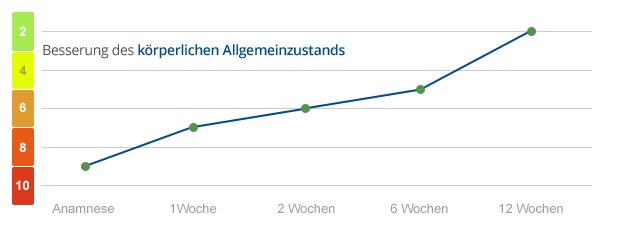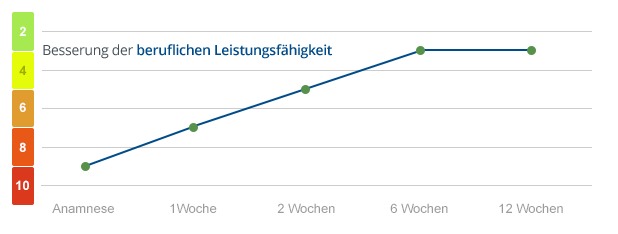
Contact us at:casestudies@normamed.com
Migraine and headaches can be caused by disturbances in liver bile function caused by infections with Candida albicans.
Medical practice has shown that there is a connection between headaches/migraines and digestive disorders in a large number of cases. If these are treated, headaches and migraines often improve permanently.
The following case study is characteristic of the observed pattern.
The patient, a 44-year-old woman, introduces herself as a part of the assignment of multiple patients within the framework of a healthcare contract in the Ärztehaus Mitte in Berlin.
The patient suffers from long-lasting chronic ailments and performance restrictions.
Specifically, she is often incapacitated to work for many days and can only carry out her professional activity to an inadequate extent. She also feels increasingly socially and psychologically burdened.

At the beginning of the examination, the findings of previous medical treatments are examined and checked.
It turns out that the patient has been suffering from several illnesses for many years. Her performance has also been severely impaired for some time and her ability to work has been severely restricted. Her ability to concentrate is very poor due to constant pain, fatigue and exhaustion.
In addition to headaches, migraines and sleep disorders, the patient suffers from rheumatism, asthma, arthrosis and high blood pressure. It turns out that symptoms (pain) have been treated almost exclusively so far.
The anamnesis offers first clues for an infection and considerable disturbances of the organ functions. It suggests the assumption that these disorders – as well as the illnesses and ailments mentioned in the previous findings – could also be caused by an unnoticed fungal infection. (Table of anamnesis results)
In fact, the previous findings of the patient do not show a single examination for pathogenic yeasts.
A diagnosis is made on the basis of the Normamed method.

Within the framework of Normamed diagnostics, the following are performed
All in all, the following disease pattern become obvious:
Asthma bronchiale; arterial hypertension; drug intolerance; house dust allergy; rheumatism; reflux; migraine; neurodermatitis; goiter nodosa; perioral dermatitis; atopic eczema; allergic asthma bronchiale; flatulence; acne rosacea; intestinal mycosis.

The patient is treated comprehensively on the basis of the examination results and receives the following in temporally phased order
The patient is informed particularly about hygiene issues and about the essential treatment of the partner who is also ill (in order to avoid so-called “ping-pong infections”).
Within the framework of the Normamed method, the progress of the treatment was regularly checked and the patient’s state of health was inquired.
Check-ups showed an eradication of the pathogenic yeast.
The course of improvement was monitored.
In particular, the following developments already became apparent in the course of the first three months:





